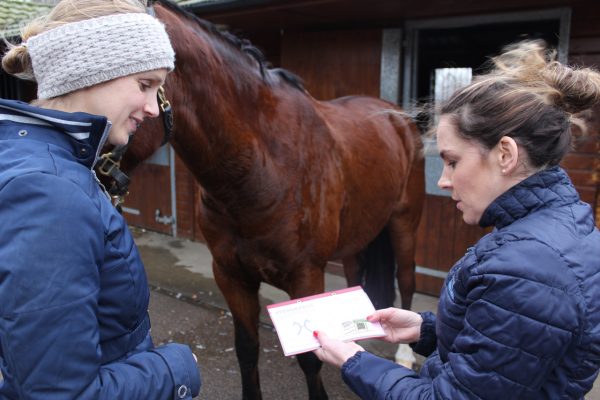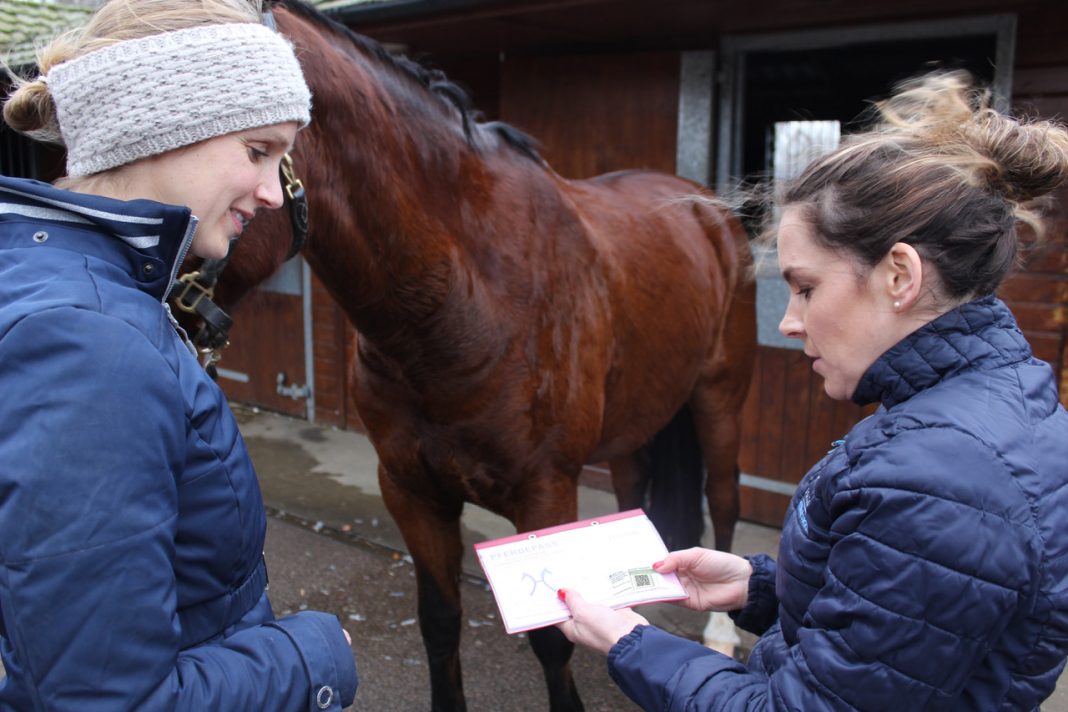The British Equine Veterinary Association (BEVA) has launched a pilot project to tackle equine obesity. The scheme uses a traffic light colour system of vaccination reminder stickers which vets can place on the front of passports at each vaccination appointment. Pending the success of the six-month pilot, the initiative will be rolled out across the UK in the summer.
Obesity is one of the biggest problems facing equine welfare in the UK but despite the best efforts of numerous equine welfare charities to address the issue, a significant proportion of owners are either not recognising obesity in their horses, or not being motivated to subsequently take action.
BEVA decided to confront the problem in a different way, using knowledge gained from the Behavioural Insights Team (BIT) – a government think tank specialising in behavioural economics and psychology.
Lucy Grieve, President Elect of BEVA and part of the association’s obesity campaign working group, explains: “Determined to look at new ways to positively engage with horse owners, we harnessed the BIT’s experience of what methods work most effectively and came up with a simple, practical scheme revolving around vaccination visits, which could be affected by vets themselves.”
The idea is to utilise the routine annual or six-monthly vaccination visit as a time to assess a horse’s body condition. A traffic light colour system of vaccination reminder stickers can be stuck to the front of the passport with the objective of genuinely reminding the owner of when the next vaccination is due, but with additional information too. A green sticker indicates a ‘healthy’ body condition. Amber means the horse is carrying too much fat tissue and needs moderate changes to diet, exercise, management, rugging and clipping regimes. Red implies that the horse is carrying excessive amounts of fat tissue which are placing the horse in morbid danger.
The aim of the colour coded stickers is to instigate a conversation about the horse’s weight as part of the scheme, sparking discussion about the potential impact on the horse’s health and how any issues can be addressed. If there is insufficient time to discuss the matter in full during the appointment, the sticker provides a colour-specific QR code which the owner can use to access additional information via their smartphone in their own time. One of three short, colour-specific videos will explain the reason their horse has been designated the colour of sticker on their passport, leading to a link to more specific advice on what the owner needs to do next. Having swotted up on the background information beforehand, the owner can then discuss the various management options with their vet at a convenient time. Taking into account individual circumstances, together they can come to a joint decision on what is the most suitable weight-loss programme for them and their horse.
“The first challenge is helping owners recognise when their horse is overweight. Once this has been established then we can make a plan to correct the problem as a team,” says Lucy. “The owner needs to be on board and committed in order to carry out the tough task of reducing the weight of their horse. We hope that owners will be ‘nudged’ by the sticker intervention to consider the information they have been offered and start to tackle the problem before it causes life-threatening disease.”
Nine equine veterinary practices were invited to participate in the pilot scheme, including Deben Valley Equine Veterinary Clinic in Suffolk. Practice Principal Helen Whitbread said: “Obesity is a welfare challenge and it is important that owners know about laminitis risk as well as the many other detrimental health issues. Fat on the outside is matched by fat on the inside of the horse, around important organs such as the liver – people often don’t realise that. I hope this scheme will direct owners to look at a reliable source on the BEVA website and digest the information in their own time and realise we are here, willing to help them.”

Credit BEVA.
Loch Leven Equine Practice in Kinross are also taking part in the pilot. Managing director Liz Somerville said: “We have been focusing on equine obesity for the last couple of years including running a #FitnotFat campaign last year to try to highlight the growing obesity problem in our horses. Unfortunately, it sometimes feels that we are banging our heads against a brick wall so when BEVA came up with a new approach to try and get the message through to our owners it was too good an opportunity to miss.”
The pilot will run for six months and will then be assessed in terms of how it worked for the vets involved, what proportion of owners used the QR codes, visited the advice pages and sought guidance from their vets.
Success will be measured by assessing whether the stickers resulted in more owners recognising that their horse is overweight not by the number of kilograms lost. To achieve such data at this stage would be a much more difficult task.
“Hopefully we’ll see some success from the pilot and using the feedback we receive we will then make changes as required before rolling the project out across the membership,” said Lucy.
Vets can find out more by visiting https://www.beva.org.uk/Resources-For-Vets-Practices/Clinical-Practice-Guidance/Obesity-in-horses
Horse owners who are concerned about their horses’ weight are advised to speak to their vet for further information.











